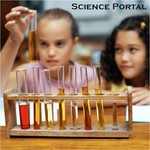| Picture |
Assessments
|
MS-PS2-1.

Newton 3 Collisions
Formative Assessment Goes Here
Packet
- Quia Vocab and Concepts Quizzes
- practice assessments
Packet
|
MS-PS2-1 Apply
Newton’s Third Law to design a solution to a problem involving the motion
of two colliding objects.*
[Clarification Statement: Examples of
practical problems could include the impact of collisions between two
cars, between a car and stationary objects, and between a meteor and a
space vehicle.] [Assessment Boundary: Assessment is limited to vertical or
horizontal interactions in one dimension.]
Asking Questions and Defining Problems
● Ask questions to determine relationships between dependent and independent variables, and relationships in models.
Students could ask questions to determine relationships between the motion of an object (dependent variable) and the sum of the forces acting on it (independent variable). MS-PS2-2
Developing and Using Models
● Develop and/or use a model to predict and/or describe phenomena.
Students could develop a model to describe [the] phenomenon [that] for any
pair of interacting objects, the force exerted by the first object on the
second object is equal in strength to the force that the second object
exerts on the first, but in the opposite direction. MS-PS2-1
Analyzing and Interpreting Data
● Analyze data to define an optimal operational range for a proposed object, tool, process or system that best meets criteria for success.
Students could analyze data to define an optimal operational range for a proposed tool [related to] the force [exerted on each of two] interacting objects. MS-PS2-1
Science Models, Laws, Mechanisms,
and Theories Explain Natural Phenomena
● Laws are
regularities or mathematical descriptions of natural phenomena.
Students could identify that laws— [such as] for any pair of interacting
objects, the force exerted by the first object on the second object is
equal in strength to the force that the second object exerts on the first,
but in the opposite direction— are regularities or mathematical
descriptions of natural phenomena. MS-PS2-1 |
MS-PS2-2.

Newton 1-2 Forces
Formative Assessment Goes Here
Packet
- Quia Vocab and Concepts Quizzes
- practice assessments
Packet
|
MS-PS2-2 Plan an
investigation to provide evidence that the change in an object’s motion
depends on the sum of the forces on the object and the mass of the object.
[Clarification Statement: Emphasis is on
balanced (Newton’s First Law) and unbalanced forces in a system,
qualitative comparisons of forces, mass and changes in motion (Newton’s
Second Law), frame of reference, and specification of units.] [Assessment
Boundary: Assessment is limited to forces and changes in motion in
one-dimension in an inertial reference frame and to change in one variable
at a time. Assessment does not include the use of trigonometry.]
Developing and Using Models
● Develop and/or use a model to predict and/or describe phenomena.
Students could use a model to predict the motion of an object [based
on] the sum of the forces acting on it. MS-PS2-2
Cause & Effect
●Cause
and effect relationships may be used to predict phenomena in natural or
designed systems.
Students could describe how they can use cause and
effect relationships to predict the motion of an object [based on] the sum
of the forces acting on it. MS-PS2-2
Systems and System Models
● Models are limited in that they only represent certain aspects of the system under study. Students could describe how models [of] the motion of an object [based on] the sum of the forces acting on it are limited in that they only represent certain aspects of the system under study. MS-PS2-2
Science is a Human Endeavor
● Scientists and engineers are guided by habits of mind such as
intellectual honesty, tolerance of ambiguity, skepticism and openness to
new ideas.
Students could read about how the scientist [Sir Isaac
Newton] was guided by habits of mind [that supported him in discovering
that] the motion of an object is determined by the sum of the forces
acting on it. MS-PS2-2 |
MS-PS3-1.

Energy
Formative Assessment Goes Here
Packet
- Quia Vocab and Concepts Quizzes
- practice assessments
Packet
|
MS-PS3-1 Construct and
interpret graphical displays of data to describe the relationships of
kinetic energy to the mass of an object and to the speed of an object.
[Clarification Statement: Emphasis is on
descriptive relationships between kinetic energy and mass separately from
kinetic energy and speed. Examples could include riding a bicycle at
different speeds, rolling different sizes of rocks downhill, and getting
hit by a wiffle ball versus a tennis ball.]
Using Mathematics and Computational Thinking
● Apply mathematical concepts and/or processes (e.g., ratio, rate, percent, basic operations, simple algebra) to scientific and engineering questions and problems.
Students could apply mathematical concepts and processes (e.g., rate, basic operations, simple algebra) to scientific questions related to the kinetic energy [of an object, which] it is proportional to the mass of the moving object and grows with the square of its speed. MS-PS3-1
Constructing Explanations and Designing Solutions
● Construct an explanation using models or representations.
Students could construct an explanation [related to the concept that] when the motion energy of an object changes, there is inevitably some other change in energy at the same time. MS-PS3-5
|
MS-PS3-5.

Energy
Formative Assessment Goes Here
Packet
- Quia Vocab and Concepts Quizzes
- practice assessments
Packet
|
MS-PS3-5 Construct,
use, and present arguments to support the claim that when the kinetic
energy of an object changes, energy is transferred to or from the object.
[Clarification Statement: Examples of
empirical evidence used in arguments could include an inventory or other
representation of the energy before and after the transfer in the form of
temperature changes or motion of object.] [Assessment Boundary: Assessment
does not include calculations of energy.]
Planning and Carrying Out
Investigations
● Evaluate the accuracy of various
methods for collecting data.
Students could evaluate the accuracy of
various methods for collecting data [to determine the] kinetic energy [of
an object]. MS-PS3-1 |
MS-PS4-1.

Waves
Formative Assessment Goes Here packet
- Quia Vocab and Concepts Quizzes
- practice assessments packet
|
MS-PS4-1 Use mathematical
representations to describe a simple model for waves that includes how the
amplitude of a wave is related to the energy in a wave.
[Clarification Statement: Emphasis is on
describing waves with both qualitative and quantitative thinking.]
[Assessment Boundary: Assessment does not include electromagnetic waves
and is limited to standard repeating waves.]
Engaging in Argument From Evidence
● Respectfully provide and receive critiques about one’s explanations, procedures, models, and questions by citing relevant evidence and posing and responding to questions that elicit pertinent elaboration and detail.
Students could respectfully receive critiques about [their] models [of] a simple wave [that] has a repeating pattern with a specific wavelength, frequency, and amplitude citing relevant evidence and responding to questions that elicit pertinent elaboration and detail. MS-PS4-1
Obtaining, Evaluating, and Communicating Information
● Critically read scientific texts adapted for classroom use to determine the central ideas and/or obtain scientific and/or technical information to describe patterns in and/or evidence about the natural and designed world(s).
Students could critically read scientific texts adapted for classroom use [about] sound waves to determine the central ideas, [including that they] need a medium through which [they are] transmitted. MS-PS4-2
Scale, Proportion, and Quantity
● Scientific relationships can be represented through the use of algebraic expressions and equations.
Students could describe how they are able to represent scientific relationships [related to] simple waves, [which have] a repeating pattern with a specific wavelength, frequency, and amplitude, through the use of equations. MS-PS4-1 |
MS-PS4-2.

Waves
Formative Assessment Goes Here packet
- Quia Vocab and Concepts Quizzes
- practice assessments packet
|
MS-PS4-2 Develop and use
a model to describe that waves are reflected, absorbed, or transmitted
through various materials.
[Clarification Statement: Emphasis is on
both light and mechanical waves. Examples of models could include
drawings, simulations, and written descriptions.] [Assessment Boundary:
Assessment is limited to qualitative applications pertaining to light and
mechanical waves.]
Planning and Carrying Out
Investigations
● Plan an investigation individually and
collaboratively, and in the design: identify independent and dependent
variables and controls, what tools are needed to do the gathering, how
measurements will be recorded, and how many data are needed to support a
claim.
Students could plan an investigation about the path that light
travels [including] at surfaces between different transparent materials.
[Then], in the design: identify independent and dependent variables and
controls, what tools are needed to do the gathering, how measurements will
be recorded, and how many data are needed to support a claim. MS-PS42
|




